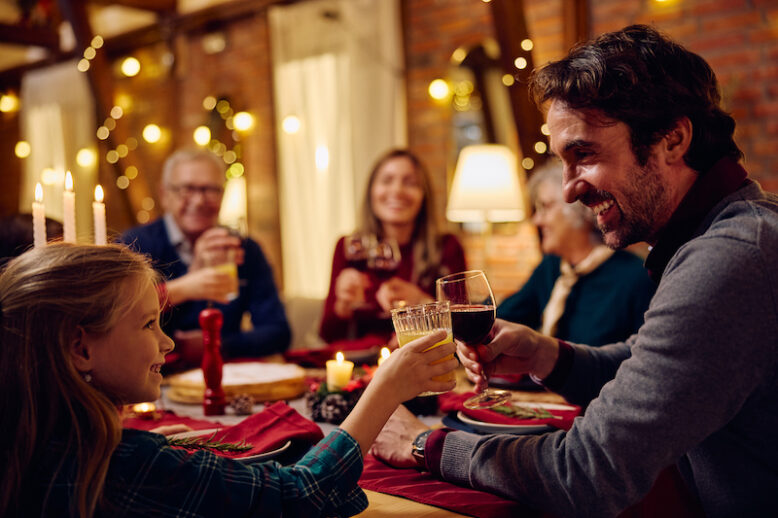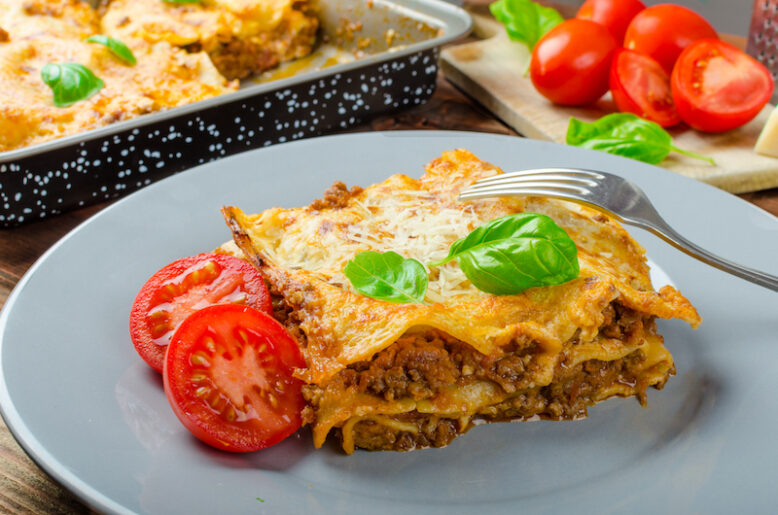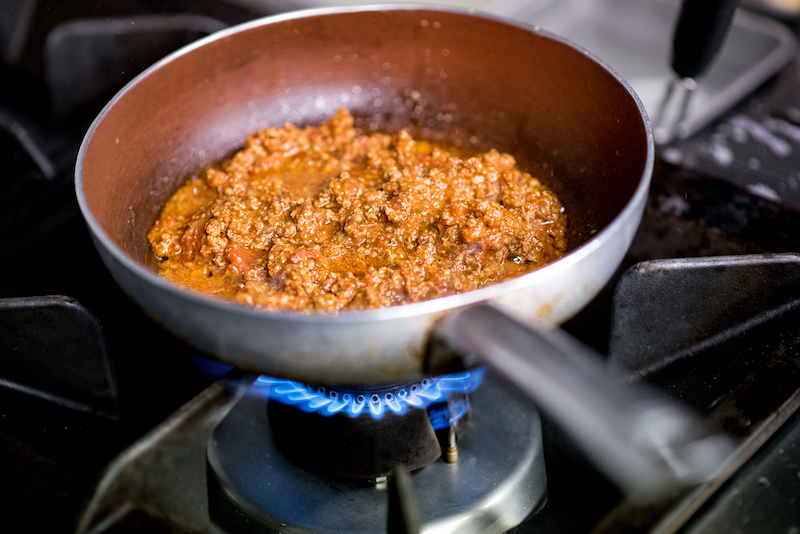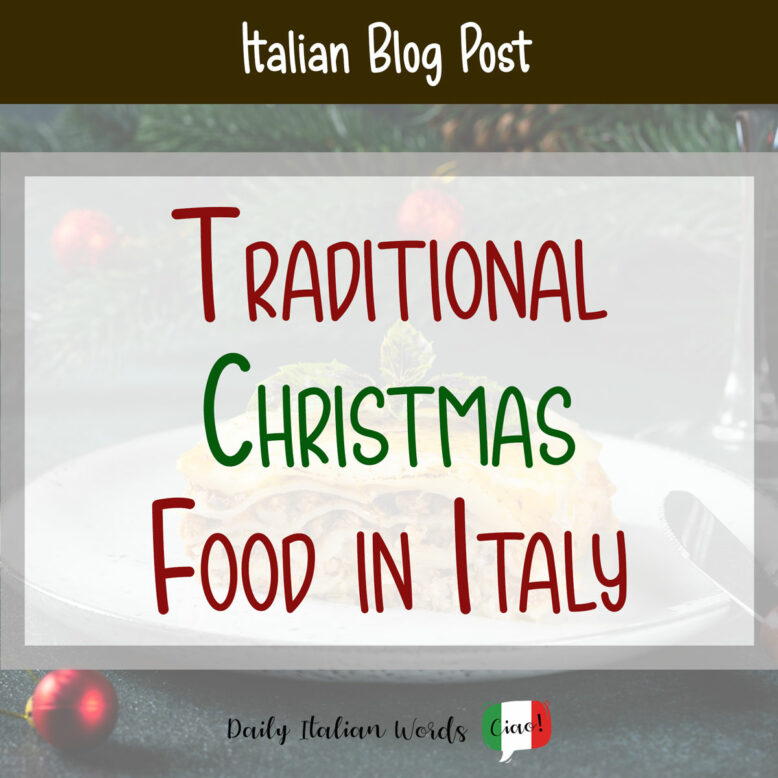In Italy, there’s always room for good food in one’s belly. Recipes and delectable dishes occupy the minds of most Italians throughout their day. However, it’s during celebrations that Italians truly shine, and naturally, Christmas Eve and Christmas Day top the list. These holidays come with national, regional, and even local traditions that are strictly observed. Curious to learn more? Well then, let’s dive in!

Traditional Christmas Food in Italy: the History
When delving into culinary traditions across Italy, capturing all the nuances can be quite a task. However, when it comes to Christmas Eve, there’s a universal rule that stands out: no meat on the table. But what’s the significance behind this tradition?
Unlike many culinary traditions with clear religious roots, the decision to abstain from meat on Christmas Eve in Italy appears to have a more secular origin. The practice is closely tied to the historical expense of meat, which was a luxury reserved for the affluent. In times past, the common folk, facing the financial challenge of regular meat consumption, turned to the more economically accessible option of fish for their everyday meals. This dietary preference carried over to special occasions, including Christmas, establishing a tradition that favours fish over meat during festive celebrations.
This being said, there might be a subtle religious undertone as well. Christians observe “lean days” before significant events, such as the birth and death of Jesus. These days, known as giorni di magro in Italian, involve abstaining from certain indulgences as an act of devotion. Some devout individuals may choose to forgo meat on these days, considering it a nod to avoiding carnal sins. In certain cases, fasting may be observed, though such strict practices have become less common in contemporary times.
Christmas Eve in Italy is celebrated with an array of fish-based specialties enjoyed with family. While fish takes center stage, variations exist. Those who aren’t fond of fish or prefer alternative options can turn to an assortment of cheeses, various pasta dishes, or other delightful alternatives. Let’s explore the main recipes that grace Italian tables on Christmas Eve and Christmas Day.

Italian Dishes for Christmas Eve
On Christmas Eve in Italy, the only culinary restriction is the no-meat rule; otherwise, you can eat whatever you like! While there might not be specific national dishes, there are commonly shared ones.
The dinner table on Christmas Eve often features mixed fried fish, a blend of fish salad, and crostini with seafood as appetisers. These starters are typically paired with a refreshing prosecco or another delightful Italian sparkling wine.
For the first courses, the possibilities are numerous and diverse. However, some prominent options include:
- Seafood risotto: prepared by cooking rice directly in a pan with pre-boiled broth, gradually adding the broth to achieve the desired “al dente” texture. Fish is incorporated to taste during the final minutes of the cooking process.
- Linguine with scampi or spaghetti with clams offer delightful variations in pasta pairings. Linguine, wider and flat compared to spaghetti, is ideally paired with scampi, a type of prawns. Meanwhile, spaghetti finds its perfect match with clams and mussels. The choice of pasta is crucial for Italians, each type complementing specific seafood dishes.
- Ravioli with pumpkin and vegetables presents a delightful twist on the traditional stuffed pasta. Typically filled with ricotta cheese, these ravioli incorporate a flavourful blend of pumpkin and vegetables, adding a savoury and comforting element to the dish.
- Seafood lasagne, also known as “pasticcio” in North Italy, offers a distinctive twist on the classic dish. Unlike the traditional lasagna, this variation features a white sauce and is enriched with a delectable assortment of seafood.
- Potato gnocchi with shrimp and zucchini
Keep in mind that the main course is typically the first dish, but it also varies based on the hosts’ preferences. Sometimes, the second dish might take on the role of the main course, especially if the menu includes mixed fried fish, oven-baked fish, or similar dishes.
Some favourite dishes include:
- Codfish with fresh tomato sauce
- Shrimp cocktail
- Oven-baked sea bream
- Grilled sea bass
- Fried stuffed anchovies
- Oven-baked salmon with potatoes and zucchini or encrusted salmon
- Swordfish alla pizzaiola (sautéed in a pan with cherry tomatoes, extra virgin olive oil, capers, and oregano, sometimes with a touch of natural fresh tomato sauce as well)
- Stuffed squid
And much, much more.
Traditional Food for Christmas Day
Christmas Day is a rule-free culinary canvas where individuals showcase their best kitchen skills without limitations.
While regional and local variations abound, certain dishes unite the entire country. Broth with tortellini, accompanied by local vegetables, is a widespread tradition across Italy. Following this, oven-cooked pasta like lasagne, stuffed cannelloni, and handcrafted pasta typically takes center stage. For main courses, rooster capon, vitello tonnato (thin slices of veal with tuna sauce), and barbecue lamb are quintessentially Italian.
Christmas pastries vary regionally, but staples like panettone, nougat, mostaccioli (distinctive biscuits with spices, water, and cocoa), and castagnaccio (chestnut pastry cake) are shared delights throughout the country. If you find yourself in Italy during this period, there’s a rich array of festive treats to savour.
But what about our traditions in Campania, in Southern Italy?

Traditional Food for Christmas in Naples
Let’s kick things off with this: in Naples, we take eating seriously, and during these festivities, we surpass our usual feats. Why? Because our grandmothers are accustomed to starting their culinary magic at 5 am, and by the time you wake up, a feast awaits you. This delightful spread is a symphony of delectable dishes.
For starters, you can savor the pizza di scarole, also known in some parts of the region as pizza di minestra. It’s a distinctive closed pizza, crafted by layering two pizza sheets—the bottom one serving as the base and the top one covering it. Inside, this delectable pizza is filled with escarole, capers, and olive oil. In certain towns, you might encounter variations with additional vegetables like savoy cabbage or other kales. Alongside this, you’ll discover an array of seafood starters mentioned earlier.
During the Christmas Eve dinner in Naples, a prevalent choice for many is spaghetti with vongole. Complementing this main course is a second plate, typically featuring a delightful assortment of fried fish. Commonly, you’ll find fried codfish, stuffed anchovies, and stuffed squid taking center stage. As evident, our fondness for fried food knows no bounds.
As for side dishes, you have the option of seafood salad, vegetable salad, and friarielli. These are the flowering tops of turnip greens, a versatile ingredient in Naples, featuring in everything from pizza (sausage and friarielli) to various fried street foods, side dishes, and beyond. It truly is a ubiquitous element in Neapolitan cuisine.
As for dessert, you’ll undoubtedly find:
- Struffoli: petite, rounded bites fried to perfection with a blend of eggs, sugar, and lard.
- Ciciaruottoli: panzerotti with a rounded or half-moon shape, featuring crumbly shortcrust pastry and a delightful filling of homemade chestnut cream, all coated in sugar and honey
- Local nougats
- Mostaccioli: originally from Calabria and Campania but now enjoyed throughout Italy
- Dried fruit
- Castagnaccio cake: a delectable creation with shortcrust pastry and a luscious chestnut homemade cream
And, naturally, all the other pastries mentioned earlier. The larger the gathering, the more abundant the spread. It’s then left to the chefs to decide what delights to present on the table.
Come Christmas, the crowning glory of the feast is the ragù, slow-cooked for a minimum of 5-6 hours and masterfully incorporated into dishes like lasagne, oven-baked pasta, or cannelloni.



Fabio Guarino is a Linguist and Language Specialist who operates as a Freelance Content Writer and SEO Marketer. He considers himself fortunate to be able to blend his passion for his native language, Italian, along with English and Spanish, with his career.


